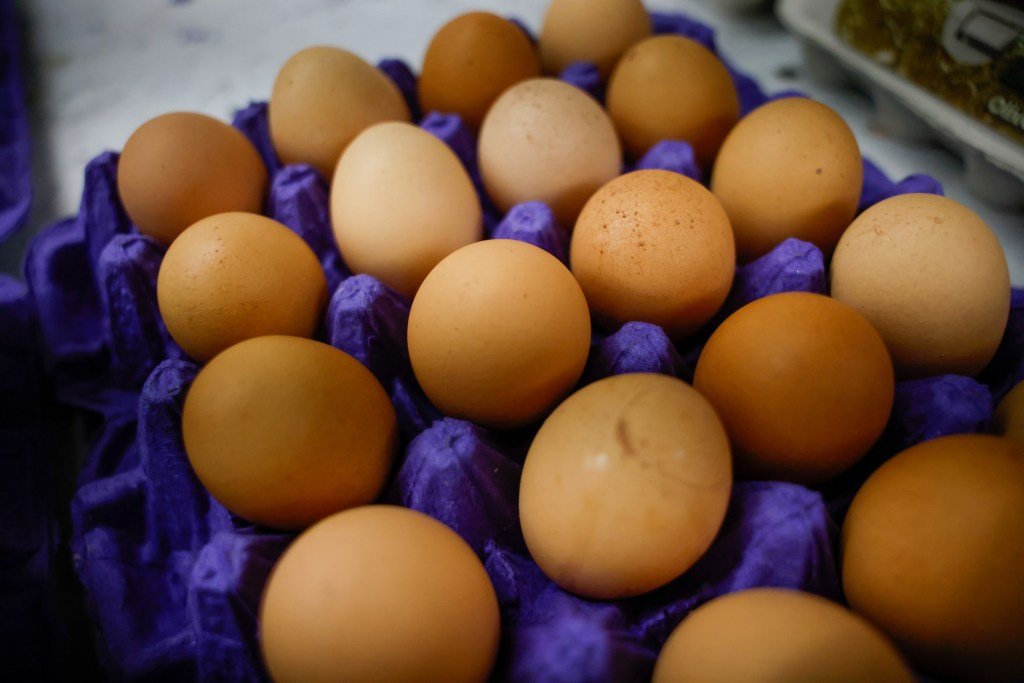Title: The Trump Administration’s Legal Battle Against California’s Egg Production Laws
The Trump administration has launched a significant legal confrontation against California, blaming the state’s animal cruelty regulations for escalating egg prices nationwide. The U.S. Department of Justice (DOJ) claims that California’s stringent animal welfare measures, specifically three laws aimed at regulating egg production, have instituted “unnecessary red tape” that ultimately hampers national agricultural practices. The administration argues that these laws violate the federal Egg Products Inspection Act of 1970, which, they argue, takes precedence over state regulations, jeopardizing egg affordability across the country.
California Governor Gavin Newsom and Attorney General Rob Bonta are among the named defendants in this lawsuit. In a press release, U.S. Attorney General Pam Bondi emphasized the adverse impacts of “liberal policies” on consumer costs, invoking the need for federal intervention to alleviate what she describes as “oppressive regulatory burdens.” This sentiment echoes the broader Trump administration narrative that blames rising prices on state-level regulations rather than on other significant factors, including the ongoing bird flu crisis.
In recent years, soaring egg prices have primarily been linked to a devastating outbreak of avian influenza, which has affected poultry populations on a massive scale. Since early 2022, nearly 175 million birds have been reported infected, resulting in substantial culling operations mandated by the Department of Agriculture to contain the outbreak. As acknowledged by the American Egg Board, the substantial loss of hens, particularly in California, has drastically reduced egg supplies. While the lawsuit attempts to shift blame onto California’s laws, experts highlight that the primary cause for inflated egg prices remains linked to these biosecurity challenges.
Despite recognizing the impact of the bird flu outbreak, Trump administration officials have indicated a desire to reform agricultural regulations as a means to address rising costs. U.S. Secretary of Agriculture Brooke Rollins articulated a strategy that involves not only regulatory adjustments but also supplemental aid and mitigation measures for farmers. This reflects a complex economic landscape where governmental actions intersect with the realities of agricultural production, leading to somewhat contradictory narratives regarding price trends and regulatory impacts.
Interestingly, the White House has recently pointed to a decline in egg prices, crediting new policies and initiating a campaign to showcase this economic relief. However, the inconsistent messaging raises questions about the administration’s focus and effectiveness in addressing the root causes of rising consumer prices. Presenting a picture of falling egg costs while simultaneously litigating against California’s regulations creates a dual narrative that could confuse consumers and heighten scrutiny over the administration’s strategies.
Central to the conflict are California’s key initiatives—Proposition 12, Proposition 2, and Assembly Bill 1437—designed to enhance animal welfare standards. Proposition 12, a voter-approved measure, prohibits the sale of eggs produced by hens in extreme confinement. The other two measures establish regulations ensuring that farm animals are not overly confined and mandating that any eggs sold in the state conform to these standards. The Supreme Court recently upheld Proposition 12, reinforcing California’s ability to impose stringent welfare regulations on agricultural products, highlighting a significant legal precedent that underpins the state’s authority over such matters.
In conclusion, the Trump administration’s lawsuit against California represents a multifaceted legal battle reflecting broader tensions between state and federal agricultural policies. While the administration seeks to unwind the regulatory framework imposed by the state, essential factors like the bird flu pandemic continue to strain egg supplies and directly impact prices. The outcome of this legal confrontation could have implications not only for California’s agricultural landscape but also for the nationwide discourse on animal welfare regulations, consumer costs, and the roles of state versus federal authority in shaping agricultural practices.





